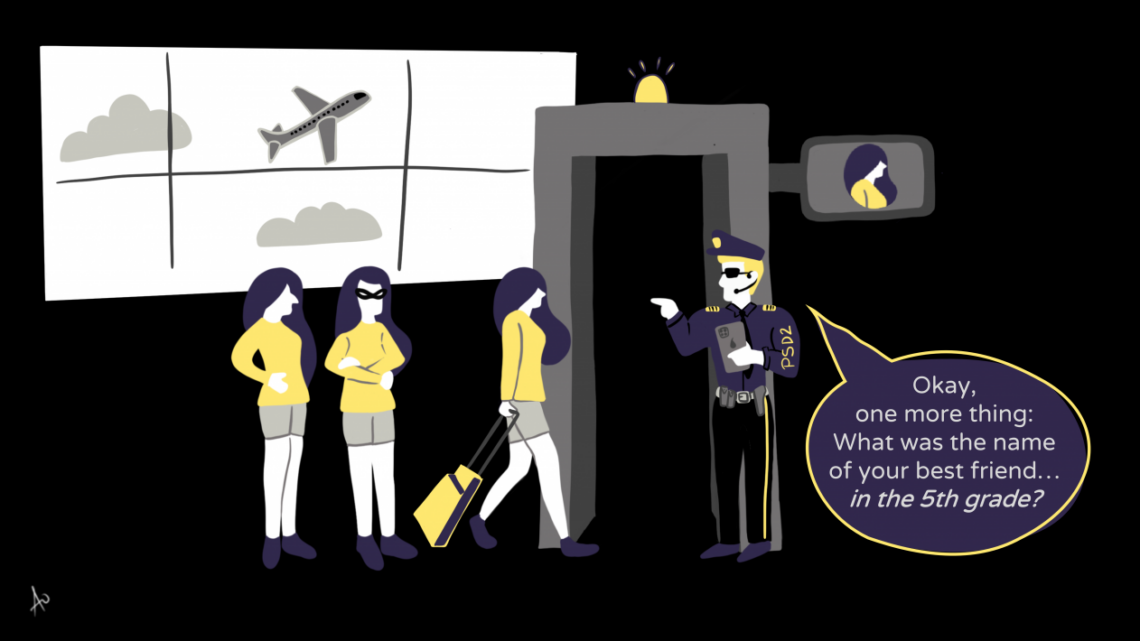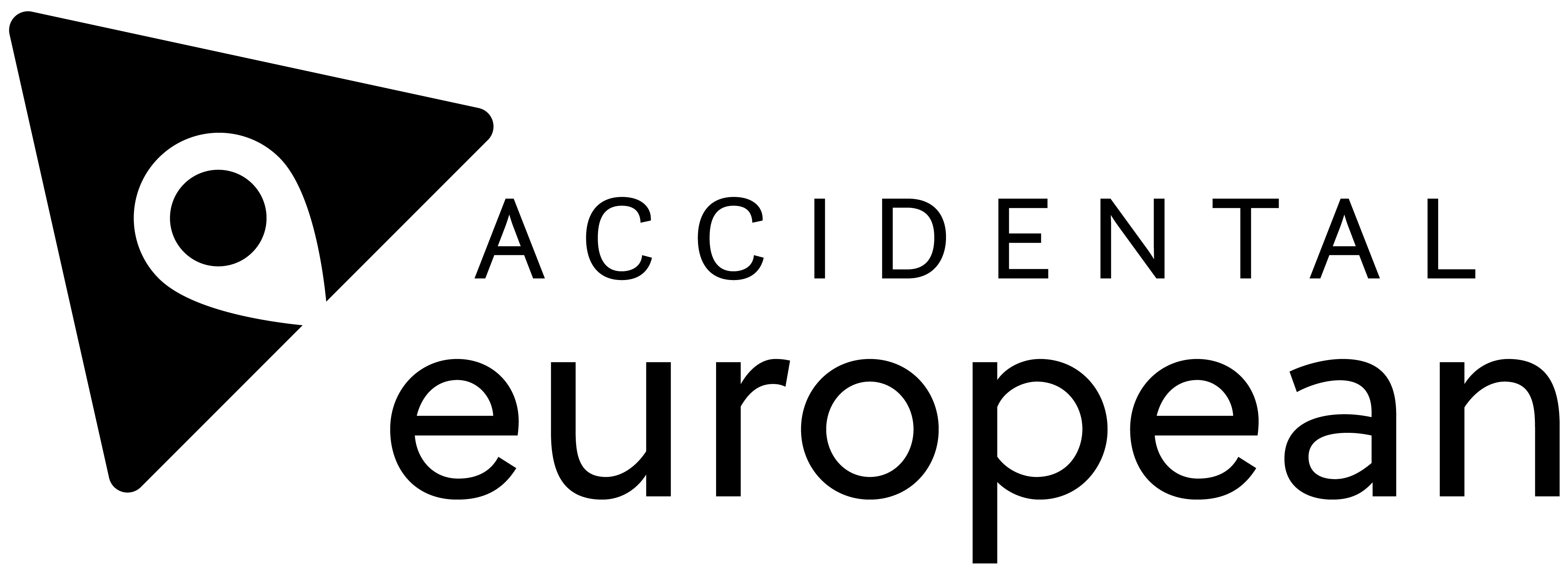Today, let’s talk about European parties. No, not the flag-waving, bring-a-dish-from-your-country, international celebrations of diversity. Not the cosmopolitan get-togethers, multi-cultural extravaganzas, and other piazza-filling, booze-imbued celebrations made possible by decades of continental peace: cornerstones of the Erasmus experience.
No. European political parties. Ah! My representatives in the European Parliament! No, not quite. Not the “Political groups of the European Parliament” that operate exclusively within the confines of the Parliament. I’m referring to their distant cousin: the extra-parliamentary political parties who “contribute to forming European political awareness, and to expressing the will of citizens of the Union”, as the treaties would have it.1 Treaty on European Union, Article 10(4): “Political parties at European level contribute to forming European political awareness and to expressing the will of citizens of the Union.” Still doesn’t ring a bell? That is precisely why we need to talk about them.
Believe it or not, the evolution of European parties is a classic Cinderella story. Like any tale, characters are a tad exaggerated and over-the-top, but a well-told story, nonetheless, conveys the broad strokes of the situation.
So let’s tell it like it is:
Once upon a time, there lived a sweet-tempered girl whose name was European Parties. Unfortunately, her mother, Article 10(4) of the Treaty on European Union, died young and could not help her in life. Meanwhile, her father, the European Parliament’s Committee on Constitutional Affairs (AFCO), married again and endeavoured to please his new wife. This second wife, European Leaders, had a sharp temper and little interest in seeing European Parties grow. Above all, she loved her two daughters from a previous marriage, National Parties and European Parliamentary Groups, who were eager to keep the spotlight on themselves and enjoyed bossing around poor European Parties to keep her at bay.
One day, all were invited to the Royal Electoral Ball given by Prince Citizens. European Parties had never gone to one of these. During the preparations for the Electoral Ball, National Parties and European Parliamentary Groups tried on their best gowns, frilly petticoats, and strappy shoes. European Parties, of course, helped them day in and day out for rehearsals, but her own clothes were raggedy and her tight budget did not really allow for more. The big election night came and poor European Parties was left at home, with nothing to look forward to, except a rerun of “Friends”.
As she heard a noise outside, European Parties ran to the door and there, in the middle of the courtyard, stood Godmother Civil Society. The Godmother told her: “My dear child, you have a good heart. I will help you get to the Electoral Ball: put on these silk electoral posters, slip on these ballots, and go on to conquer the heart of Prince Citizens!”.
Prince Citizens was charmed with the “stranger” and they danced the night away. As the clock rang midnight, she disappeared before the end of the Electoral Ball, leaving Prince Citizens alone, and wondering.
“Who was this marvelous creature?”
The tale stops here, though, and it may or may not have a happy ending. Will European Parties marry Prince Citizens? Will Prince Citizens instead have to settle for National Parties or Parliamentary Groups? Will Godmother Civil Society continue to support European Parties? Will Old Father AFCO finally stand up to European Leaders to help European Parties blossom?
Cinderella has come to refer to “someone or something suddenly successful but previously unknown or given little attention.”2Cambridge Dictionary, https://dictionary.cambridge.org/us/dictionary/english/cinderella
The question is whether European parties can emerge from the shadows of national parties and parliamentary groups to finally take their place amongst citizens. Only then can we strengthen European democracy.
Setting up the plot: A short history of European parties
European parties have been around for quite some time, deriving from parliamentary formation set-ups within the “Common Assembly” of the European Coal and Steel Community (ECSC) in the early 1950s. The parliamentary formations were created when the Assembly’s members decided to sit together, not by nationality, but by ideology. “I’ve saved a space for you, comrade” they would say.
In 1958, the newly-created European Parliamentary Assembly inherited the ECSC’s Common Assembly Rules of Procedure, which recognised parliamentary groups and three ideological groups: the socialists, the christian-democrats, and the liberals and apparentés. It was in 1979, ahead of the first European Parliament elections by universal suffrage, that the newly born structures appeared outside of Parliament under various names. The most common denomination, “transnational party federation”, implied an umbrella organisation for national parties operating across borders. In 1992, the Treaty of Maastricht included the first article relating to European parties (the first so-called “party article”) in a European treaty.3Article 138a of the Treaty of Maastricht read: “Political parties at European level are important as a factor for integration within the Union. They contribute to forming a European awareness and to expressing the political will of the citizens of the Union.” This event essentially marked the legal birth of European parties. This “party article” now acts as the constitutional mother. Initially declaratory, the “party article” enshrines European all parties within constitutional law and sets the legal basis for their subsequent development.
In 2001, the Treaty of Nice mandated the regulation of European parties. Funding began in 2004, but it was not until a decade later (October 2014) that proper European party status was created by Regulation 1141/2014, forming the basis of today’s framework for the regulation of European political parties.
It only took 22 years, following its inception, for European Parties to start coming of age. However don’t be fooled and think that the story ends here. I am just setting the plot.
The story still needs unraveling.
A large cast: The European party system
Looking at European political parties, it is useful to clarify, first, who is who in the party system — especially since most of these parties greatly ressemble her step-sisters.
Like any other modern representative democracy, the European Union incorporates a number of political parties. This European party system is linked to, but autonomous from, the national party systems within Member States.
Since 2018, there have been 10 registered European parties. In addition, there are six more or less integrated political movements not meeting the registration criteria of Regulation 1141/2014, and therefore not officially registered as European parties. The sixteen total entities are presented below.

Registered (above) and non-registered (below) European parties
Source: European Democracy Consulting
As in most representative democracies, these political parties and movements, by nature extra-parliamentary entities, act independently from yet in conjunction with political groups (or “parliamentary groups”) in the European Parliament. More often than not, these parliamentary groups are mentioned or interviewed the most in the media when European topics are discussed. This explains why citizen’s are more aware of European parliamentary groups than of European parties.

Registered and non-registered European parties (left) and their affiliated political group in the European Parliament (right).
Source: European Democracy Consulting
The first main difference between national and European parties relate to the composition of European parties. With almost no individual members of their own, European political parties consider national member parties as their own.
Unlike federal-level parties in most federations, European parties often have a different name and visual identity from these member parties. Ideological coherence is often limited, especially since European parties incorporate several national member parties in the same Member State. With 51 parties across 27 Member States, the European People’s Party (EPP) is a clear example of this.

The European People’s Party (EPP) and its national member parties.
Source: EuropeanConstitution.eu
At first glance, European parties are quite similar to national parties — they serve the same purpose, aim to do the same tasks and are regulated in similar ways — but they are one step removed from citizens, by being “parties of parties”. Well, you might say, what’s wrong with that? European citizens are already very familiar with their national parties, why not keep national parties in control and European parties as a kind of meeting place for national parties?
The narrative of political parties merit further exploration in order to answer this question.
Supporting actors: Political parties, what roles do they play?
The European Union is often referred to as a system “sui generis”; a system like no other. However, this is not in the treaties, and there is no reason not to compare the EU to other multi-level political systems.
While national political systems have varying party systems, there are common elements between them. We can, for example, identify seven main functions of political parties.4Reconnecting European Political Parties with European Union Citizens, International IDEA Discussion Paper 6/2018, https://www.idea.int/sites/default/files/publications/reconnecting-european-political-parties-with-european-union-citizens.pdf
|
1. Structuring the vote through party labels. Citizens identify their interests and values, and match them with a party label for which they vote. |
|
2. Mobilising and socialising the population. Parties connect citizens to the political system and increase their attachment to that system via membership, structuring of political positions, events, activism, etc. |
|
3. Contributing to candidate selection. Parties are the main gateway to the selection of those running for office. |
|
4. Aggregating interests of different sections of the population. Whether a party represents a whole class, based on a large cleavage (such as socialist or the christian-democratic parties), or a narrower section, based on common interests or values (such as pirate, animalist or hunters’ parties), political parties claim to represent the interests of certain segments of the population. |
|
5. Contributing to the development of public policy. Parties draft policy positions and seek to influence the policy-making process, inside and outside of official institutions. |
|
6. Structuring the relations between the legislative and the executive branches. Most elected officials and political positions in the executive should be held by members of the majority party. |
|
7. Contributing to the legitimacy of the political system. This derives from the six previous functions: parties strengthen the political system by ensuring that citizens are represented and popular support is formalised. |
Currently, European parties simply don’t fulfill these roles.
|
1. They do not structure the vote. European parties do not intervene in national and local elections. During European elections, their role is limited and citizens cast their ballot in favour of national parties. |
|
2. They do not mobilise the population. European parties are not recognisable by citizens and, with almost no individual membership, they do not trigger any considerable mobilisation from citizens. |
|
3. They do not select candidates during elections. National parties exercise the monopoly in the selection process. Key actors within the EU’s executive, such as Commissioners, are not chosen by European parties. This also includes the President of the European Commission! The Spitzenkandidat system, which attempted to link the nomination of the Commission President to the result of the European elections, could have changed this. In fact, each European party was supposed to nominate a “Spitzenkandidat” (German for “lead candidate”), and the presidency would have gone to the Spitzenkandidat of the winning party. This system led to the election of Jean-Claude Juncker in 2014, but European leaders discarded this process in 2019. At the time, only a fraction of European parties actually chose a lead candidate, with the ultimate nomination for Commission President going to Ursula von der Leyen, who was not the lead candidate of any party. |
|
4. The aggregation of various interests is not conducive to clear positions. While some parties have proved to be more ideologically coherent than others – for instance the socialist and green parties – other European parties remain far less coherent in their political stance than national parties. This is expected given the multitude of national parties European parties try to bring under their umbrella. |
|
5. They contribute marginally to policy formulation. This runs in the same vein as the previous point, because European parties, given the variety of their national party members, lack the ideological homogeneity most often characteristic of national parties. |
|
6. They only provide minimal links between the legislative and executive branches. At the moment, the links that European parties do provide are through congresses and pre-European Council summits. However, these are often limited to general exchanges of views, and not all parties organise such summits. |
|
7. They do not create tangible links with citizens. Unfortunately, this does not enhance the legitimacy of the European political system. |
Clearly, all is not well in Partyland. Reform is required for European parties to truly meet the roles expected of them. But, while one might ask: “These criteria are for political parties, national parties… does it really apply to European parties?”
I would answer with a firm “yes”.
In search of a role: What should European parties do?
At this point in the story, things get a little complicated. While it’s easy to say what European parties do and don’t do, what they should be doing is debatable.
Since the beginning of this tale, we’ve been talking about “European political parties” or “European parties”, and, while the term is self-explanatory, it also hints at a difference in nature compared to “national parties”.
However, this is not what the EU treaties say! The treaties talk about “Political parties at European level”. The Charter of Fundamental Rights talks about “Political parties at Union level”.5The Charter of Fundamental Rights can be accessed here: https://eur-lex.europa.eu/legal-content/EN/TXT/?uri=CELEX:12012P/TXT In both cases, they specify at which level the parties act, but they are first and foremost referred to as “political parties”, and this more complex phrasing was definitely not chosen randomly.
So, without further indications in the treaties, we must assume that the constitutional legislators expected the functions of regular political parties but at EU level. This was confirmed by a recent case at the European Court of Justice. The Advocate General, talking about national parties, expressed that “Political parties participate in the formation and expression of the will of the people as a means of shaping the will of the State.” This is almost a word-for-word description used in the treaties to describe the goal of European parties, clearly underlining the continuity and similarity between the two: political parties at national level, and political parties at European level. Same goals, same purpose.6Also see: Article 21 of the German Basic Law (i.e. the German constitution), which states that “Political parties shall participate in the formation of the political will of the people.”
Glass slippers: Key reforms for European parties
Given the extent of European parties fail to live up to their expected role, there are many aspects of their framework that must be amended, most of which can be achieved through a carrot-and-stick approach. A bit better suited to the Donkey from Shrek perhaps, but Cinderella can adjust!
Overall, there are two things that political parties seek: access to power (directly, through offices-holding, and indirectly, through policy-making and influence) and access to funding.
Incentives should cater to this, providing European parties access to positions of power and policy influence, and, with proper funding, design a performance-system that encourages a level playing field.
However, parties should not receive a free ride either, and constraints are the flip side of this access to power and money. These generally include constraints on their values (say, not seeking to overthrow democracy for instance), their internal organisation (having democratic processes, ensuring gender balance and diversity in management bodies), and their operations (being transparent, using their money legally, etc.).
Because as much as parties are essential, giving public money to politicians who fly off to Ibiza to drunkenly propose public contracts to a supposed Russian oligarch’s daughter in return for donations and media influence (true story) is not conducive to public trust.7Austrian far-right leader filmed offering public contracts for campaign support, Politico Europe, https://www.politico.eu/article/austria-far-right-freedom-strache/
Unfortunately, no matter how sweet your carrot or heavy your stick, your donkey won’t go anywhere if the road ahead is blocked. In addition to incentives and constraints, a number of legal roadblocks must also be lifted for European parties to advance. First, European parties should be able to directly act at both national and local levels and fund national parties and candidates — after all, a national party forbidden from financing the activities of its local offices around the country is like a Fairy Godmother being banned from helping her children.
Now, close your eyes for a second (but then reopen them to read), and imagine a bountiful kingdom with the following reforms that…
|
1. Transform European parties into citizen focused associations. Currently, registration as a European party requires electoral success in at least seven Member States. Instead, European citizens should be able to form a party and then seek to be elected, as is the case for national parties. Registration should therefore be based on a minimum number of members in two or three Member States — the number of members per Member State can be indexed on the State’s population. Likewise, individual party members should democratically elect the party’s senior leadership and adopt its party’s policies.8 National parties might seek to restrict the number of European party members to just national party leaders in order to keep elections under control; the election should also include individual members of the national parties affiliated with the European party. |
|
2. Streamline the structure of European parties. European parties cannot be politically coherent so long as competing national parties are members of the same European parties; citizens need to know who stands where. Eventually, European parties should only have one national member party per Member State. Exceptions can be designed for national parties that compete in separate areas: much like the example of two Belgian sister-parties, with one operating in Flanders and the other in Wallonia. |
|
3. Revisit party financing. Imagine if public funding rewarded desirable party aspects. It could be broken down into several streams, each rewarding different things. We could provide an equally distributed baseline for all parties to ensure fairness; reward electoral performance; incentivise increasing individual membership; and match private money raised in order to encourage outreach to citizens.9A coefficient can encourage presence in a wide number of Member States, and a ceiling would ensure that costs do not balloon out of proportion. Dedicated support can be provided for the purpose of electoral campaigns and time-limited rules should facilitate the emergence of new parties. Provisions can be made for European parties to directly support their national parties and candidates, such as promotional material that would require the displaying the visual identity of the European party. Currently, European parties are 85-90% EU-funded, so they are not incentivised to reach out to citizens. Furthermore, 90% of this public funding is distributed based on the number of MEPs in a given party, meaning smaller parties lose most of their funding. |
|
4. Bolster the visibility of European parties. One of the easiest ways to promote European parties is by making them more visible to citizens. At the very least, the logos of these parties should be featured prominently on the websites of their national parties, and on the ballots and electoral documents used for European elections.10 The display of European parties’ logos on the websites of national member parties is already a pre-condition for the public funding of European parties. However, it is not implemented in practice. For more details, see https://eudemocracy.eu/logos-project [currently password-protected, will be public soon] The Authority for European Parties should also take on the responsibility of providing citizens with information on European parties via visible publications. In fact, the results of European elections from the perspective of European parties should be published in the same way that the European Parliament publishes the results of European elections from the perspective of parliamentary groups.11For more on the results from the perspective of European parties, see https://eudemocracy.eu/european-elections-as-you-ve-never-seen-them-before. |
Taken together, these reforms would mark a profound shift in the European party system, since its inception. European parties will finally have the tools to not only engage with citizens, but also encourage them to extend their political engagement beyond local and national levels.
The end?
The Brothers Grimm, were they political, might be a bit disappointed in how the story has unravelled so far… But the story arc of European parties can still be one of redemption.
From the European treaties, we know that European parties can and must be compared to political parties in other representative democratic systems. Thus, if observations show that European parties do not resemble the role and functions of regular political parties, we have a duty to reform them.
The issue of reforming European parties is not about being pro-European, anti-European, let alone federalist. It’s about ensuring that we live up to the treaties: which means providing the provision for the creation and full-functioning of political parties at EU level. No more, but certainly no less.
The current ongoing review of Regulation 1141 should objectively assess the functioning of European parties and highlight where they fall short when compared to political parties in other representative democracies. Following these observations, the European Parliament should formulate bold recommendations based on available best practices in order to provide citizens with an effective party system to properly represent them.
If such reforms are implemented, European democracy might just live happily ever. Yet, in the meantime, we still have three years until the next Electoral Ball…
So get ready. It will soon be “party” time again!









